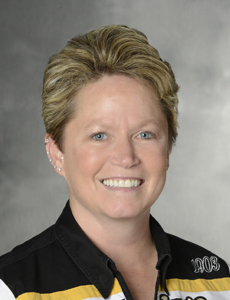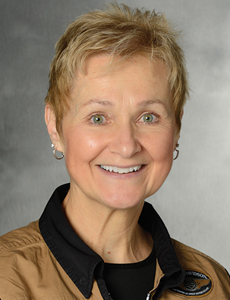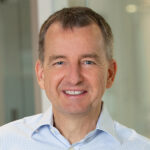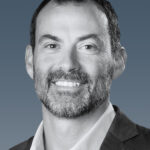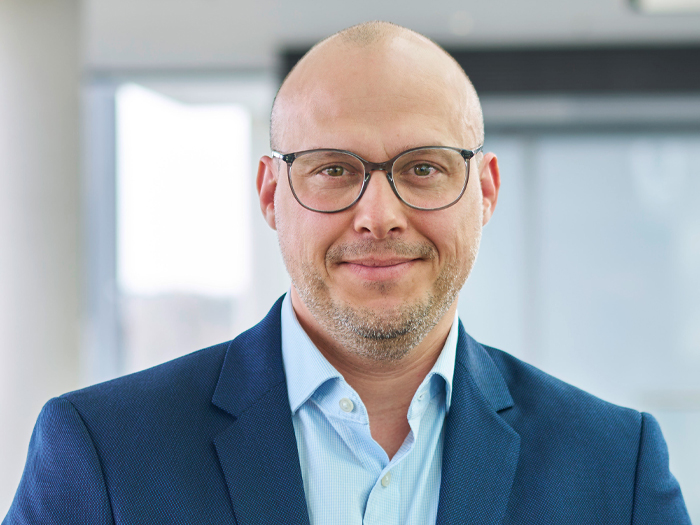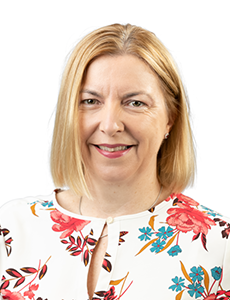2014 Teddy Award Winner
The TLC Behind the Roar
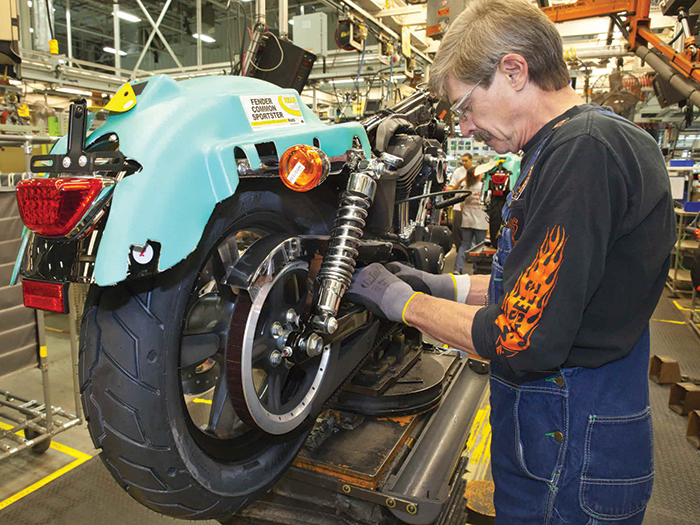
Their iconic machines are renowned the world over, embodying care-free thrills on the open road. Yet behind Harley-Davidson’s roaring engines and glinting chassis is a measured approach to manufacturing — particularly when it comes to employee safety.
Indeed, so comprehensive is the company’s approach to its workers’ health that it scooped a 2014 Theodore Roosevelt Workers’ Compensation and Disability Management Award.
Dave Eslinger, a Milwaukee-based senior vice president of claims with the Hays Cos., has seen firsthand how Harley-Davidson’s workers’ compensation program has evolved over the last few years. He believes the company has become unrivaled among its peers when it comes to the allocation of resources and expertise for reducing claims.
“The program is different [from others in the manufacturing sector] primarily because of the team Harley-Davidson has assembled to monitor its claims. Other employers often don’t devote that type of resource to their claims function,” he said. “They are doing a great job.”
Beth Mrozinsky, head of workplace health and safety at Harley-Davidson, admitted that sweeping improvements to the company’s approach to safety have been “a very expensive proposition,” but she believes the outcomes will far outweigh the costs. The numbers already speak for themselves.
Due to the nature of the business, which revolves around the production and testing of high-spec motorcycles, often involving moving heavy machinery, the majority of claims are musculoskeletal disorders and injuries. In 2009, these injuries accounted for 80 percent of total claims. But thanks to widespread initiatives to improve risk awareness and safety procedures, that figure fell to 50 percent by 2013.
Total injuries fell from 778 in 2009 to 252 in 2013. Meanwhile, workers’ compensation claims were reduced by 68 percent in that time, and more than $3.6 million in annual workers’ compensation claim costs have been wiped off the bottom line of the business, while insurance renewal rates are down.
Not bad, considering a recent change to the company’s manufacturing operating system allows it to increase its workforce up to 30 percent during high-cycle production times — resulting in an influx of untrained temporary workers. The average age of Harley-Davidson’s manufacturing employee base is currently between 45 and 50 years old.
Shifting Gears
So how did Harley-Davidson improve workplace safety so dramatically in such a short time? The first challenge was to overcome lingering liabilities from years gone by. It placed all legacy claims on individual action plans with the goal of complete resolution — and to date has closed 95 percent of these claims and their long-term liability risk.
Looking forward, the steps Harley-Davidson has taken to improve the safety of its employees and claims costs to the company are wide-reaching. Having severed ties with unwanted vendors, the company created a “hybrid workers’ compensation claims model” through which a focus group comprised of Harley-Davidson and vendor partners, including health and physical therapy center staff, field nurse case managers, consultants and brokers regularly report and analyze claims developments.
Harley-Davidson has also invested heavily in health, safety and risk management-related staff. Indeed, Harley-Davidson’s employees have access to a range of health facilities, from wellness centers to gyms and physical therapy centers, all designed to keep them in optimal shape and reduce the risk of injury.
On-site employee medical resources include nurses, case managers, physicians, occupational/physical therapists and athletic trainers, in addition to full service health and fitness centers. This has proven one of the most effective ways of reducing claims costs.
In the last year, the company boosted its on-site physical therapy center resources in the form of full-time certified athletic trainers to complement its existing early intervention program for musculoskeletal disorder issues; it hired a dedicated medical director; and also put in place a full-time ergonomic specialist at each manufacturing location to identify and eliminate risks in the workplace.
“Harley-Davidson is very aggressive with early intervention,” said Eslinger. “They have athletic trainers on staff to treat minor strains, for example, which can take care of the claim right there without the need for any outside medical intervention or attention.”
The company has also hired a dedicated workers’ compensation adjuster for each region, each with a maximum caseload cap and the creation of an annual “Adjuster Summit” to align findings.
The company instigated corporate-wide ergonomic projects to educate staff on the risks associated with each particular task, as well as numerous other initiatives to raise risk awareness among the workforce — including the two-year implementation of a health and safety technology system to standardize safety programs.
The three top incident types at each manufacturing location are also subject to their own focus groups, while complex claims are subject to weekly case management reviews.
Harley-Davidson has also developed return-to-work and stay-at-work policies including lifestyle assistance, while also updating its employee selection process to include comprehensive medical screening to determine the employee’s capability to safely perform the job.
“This didn’t start overnight — our program has morphed over the years. Every step of the way we would analyze what was going well, and what was not, and we would revamp our process and go again,” said Sue Gartner, corporate health services manager at Harley-Davidson.
“We were never sitting still — we were always moving, like a chess piece,” she said.
Culture Shift
But more challenging than implementing any of the individual initiatives has been the process of effecting an organization-wide attitude shift — resulting in increased accountability, risk awareness and discipline.
“When we were initially involved, there was a loose set of procedures in place that have tightened up significantly with respect to the performance of people across the team,” said Eslinger, reflecting on how far the company has come.
“From defense counsels to nurse case managers, to third-party administrators and broker consultants; everyone has responsibility to the program.
“The company has created an awareness that it is serious about its workers’ compensation program and is trying to curb costs. It’s been a culture shift that has evolved over time.”
“We were never sitting still — we were always moving, like a chess piece.” — Sue Gartner, corporate health services manager at Harley-Davidson
Eslinger added that Harley-Davidson’s investment in its program has led to fewer claims disputes — not only does it apply a more rigorous approach to claims investigation, but perhaps more significantly, the provision of on-site health services for its staff has reduced the need for third-party medical treatment and challenges to settlements through independent medical exams.
“The big emphasis is on timely contact [with employees], treating workers fairly, paying the claims you owe, and denying and defending the ones you don’t. If someone is injured on the job they are taken care of, but if there are questions concerning the claim or accident, it is going to be investigated.”
Along the way, Mrozinsky and Gartner faced a number of obstacles, including a misalignment of stakeholder interests and needs.
“We knew we needed to change the culture but we were not prepared for the level of resistance,” Mrozinsky said, commending the “personal and unwavering leadership support and involvement by Harley-Davidson’s CEO, vice president of HR and other senior company leaders,” as well as the role of vendor partners such as third party administrator Gallagher Bassett, in getting the message across.
“It’s truly a partnership with our vendors, both internal and external. We couldn’t do it if we didn’t all agree to the strategy and were aligned philosophically,” said Gartner.
Mrozinsky added that she is particularly proud of the way the workers’ compensation program has become holistic — both in its organization and also the approach to managing employees’ general health.
“We went from talking about the health center, the fitness center, the therapy center, to talking about the wellness center collectively rather than its individual components,” she said, while Gartner added: “We had great program in the past but things were fragmented. We’ve pulled together and are working as a team. We are all of one mind-set and know what direction we are going in.”
“We try to think outside of the box to respond to employees’ needs, and look at employees’ whole wellness, not just responding to work-related incidents,” Gartner said.
That means going out to the shop floor to talk to employees, instead of waiting for employees to come talk to the claims team.
As well as saving Harley-Davidson millions in claims losses last year, the provision of wellness services has also contributed to improved employee engagement and productivity.
_______________________________________________________
Read more about all of the 2014 Teddy Award winners:
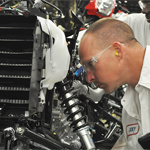 Building Value with Trust: Honda of South Carolina boosted its involvement with injured worker cases, making a positive first impression on employees and health care providers.
Building Value with Trust: Honda of South Carolina boosted its involvement with injured worker cases, making a positive first impression on employees and health care providers.
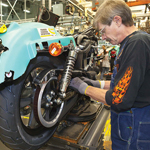 The TLC Behind the Roar: A proactive and holistic approach to employees’ well-being has resulted in huge reductions in work-related injury claims for Harley-Davidson.
The TLC Behind the Roar: A proactive and holistic approach to employees’ well-being has resulted in huge reductions in work-related injury claims for Harley-Davidson.
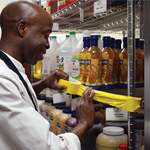 Quick to Act: Compass Group is lauded for its safety initiatives and for a return-to-work program that incorporates all of its business lines.
Quick to Act: Compass Group is lauded for its safety initiatives and for a return-to-work program that incorporates all of its business lines.
 Healing the Healers: Teddy Award winner Cold Spring Hills Center for Nursing and Rehabilitation proved that even small organizations can make a huge difference in their employees’ lives.
Healing the Healers: Teddy Award winner Cold Spring Hills Center for Nursing and Rehabilitation proved that even small organizations can make a huge difference in their employees’ lives.

